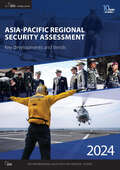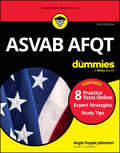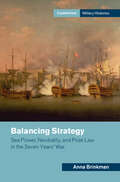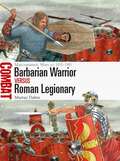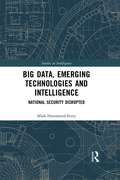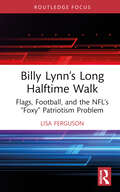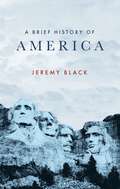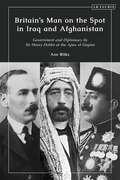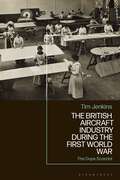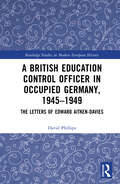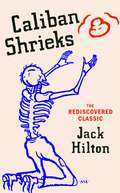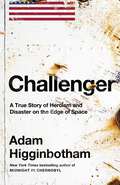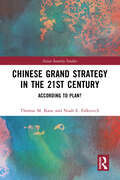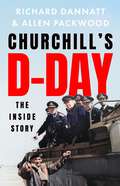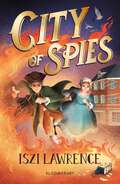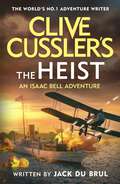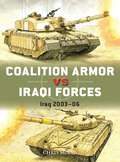- Table View
- List View
Asia-Pacific Regional Security Assessment 2024: Key developments and trends
The Asia-Pacific Regional Security Assessment (APRSA) examines key regional security policies and challenges relevant to the proceedings of the IISS Shangri-La Dialogue, Asia’s premier defence summit convened by the International Institute for Strategic Studies (IISS). It is published and launched at the Dialogue and the issues analysed within its covers are central to discussions at the event and beyond. This eleventh edition comes as the APRSA celebrates its first decade. A dozen IISS experts reflect on a decade of change and continuity across major security policies and challenges facing the Asia-Pacific region. Three themes materialise across six chapters: the pressure and constraints surrounding great-power competition, the enduring value of alliances and partnerships and the impact of advanced and emerging technology for regional security dynamics.In addition to the introduction, the APRSA will now feature a special-topic chapter providing a deeper analysis of an enduring security policy and challenge. The other five chapters investigate further key dimensions of the regional security environment, supported by maps, graphs, charts and tables. The six chapters of this year’s APRSA cover the following topics: Combined military exercises in the Asia-Pacific Crisis management between the United States and China India’s defence partnership in the Asia-Pacific Diplomatic approaches to managing the Myanmar conflict Disinformation campaigns in the Asia-Pacific The Asia-Pacific air-to-air challenge
Asia-Pacific Regional Security Assessment 2024: Key developments and trends
The Asia-Pacific Regional Security Assessment (APRSA) examines key regional security policies and challenges relevant to the proceedings of the IISS Shangri-La Dialogue, Asia’s premier defence summit convened by the International Institute for Strategic Studies (IISS). It is published and launched at the Dialogue and the issues analysed within its covers are central to discussions at the event and beyond. This eleventh edition comes as the APRSA celebrates its first decade. A dozen IISS experts reflect on a decade of change and continuity across major security policies and challenges facing the Asia-Pacific region. Three themes materialise across six chapters: the pressure and constraints surrounding great-power competition, the enduring value of alliances and partnerships and the impact of advanced and emerging technology for regional security dynamics.In addition to the introduction, the APRSA will now feature a special-topic chapter providing a deeper analysis of an enduring security policy and challenge. The other five chapters investigate further key dimensions of the regional security environment, supported by maps, graphs, charts and tables. The six chapters of this year’s APRSA cover the following topics: Combined military exercises in the Asia-Pacific Crisis management between the United States and China India’s defence partnership in the Asia-Pacific Diplomatic approaches to managing the Myanmar conflict Disinformation campaigns in the Asia-Pacific The Asia-Pacific air-to-air challenge
ASVAB AFQT For Dummies: Book + 8 Practice Tests Online
by Angie Papple JohnstonLearn the stuff you need to know to enlist in the U.S. military Want to enlist in the military? You’ll have to pass the AFQT—the core sections of the ASVAB test that gauge your core academic competency. ASVAB AFQT For Dummies helps you review the Math Knowledge, Paragraph Comprehension, Word Knowledge, and Arithmetic Reasoning skills you’ll need to earn a great score. You’ll get access to deep content review and practice for each section, plus four full-length practice tests in the book and four more online. Plus, this book is packed with must-know information about how to register, when and where to take the test, and how to target your preferred career—including careers in the new Space Force. Study with this Dummies guide and start your U.S. military career. Review all the content covered on the four ASVAB subsections that qualify you to enlist in the U.S. armed forces Learn about each of the question types and get strategies for answering them quickly and easily Prepare with 8 full practice tests, plus more practice questions on each topic Get complete explanations of all correct answers so you can sharpen your skillsAnyone preparing to take the ASVAB will love this extra Dummies-style review and practice on the AFQT subsections.
ASVAB AFQT For Dummies: Book + 8 Practice Tests Online
by Angie Papple JohnstonLearn the stuff you need to know to enlist in the U.S. military Want to enlist in the military? You’ll have to pass the AFQT—the core sections of the ASVAB test that gauge your core academic competency. ASVAB AFQT For Dummies helps you review the Math Knowledge, Paragraph Comprehension, Word Knowledge, and Arithmetic Reasoning skills you’ll need to earn a great score. You’ll get access to deep content review and practice for each section, plus four full-length practice tests in the book and four more online. Plus, this book is packed with must-know information about how to register, when and where to take the test, and how to target your preferred career—including careers in the new Space Force. Study with this Dummies guide and start your U.S. military career. Review all the content covered on the four ASVAB subsections that qualify you to enlist in the U.S. armed forces Learn about each of the question types and get strategies for answering them quickly and easily Prepare with 8 full practice tests, plus more practice questions on each topic Get complete explanations of all correct answers so you can sharpen your skillsAnyone preparing to take the ASVAB will love this extra Dummies-style review and practice on the AFQT subsections.
Balancing Strategy: Sea Power, Neutrality, and Prize Law in the Seven Years' War (Cambridge Military Histories)
by null Anna BrinkmanWhat is the relationship between seapower, law, and strategy? Anna Brinkman uses in-depth analysis of cases brought before the Court of Prize Appeal during the Seven Years' War to explore how Britain worked to shape maritime international law to its strategic advantage. Within the court, government officials and naval and legal minds came together to shape legal decisions from the perspectives of both legal philosophy and maritime strategic aims. As a result, neutrality and the negotiation of rights became critical to maritime warfare. Balancing Strategy unpicks a complex web of competing priorities: deals struck with the Dutch Republic and Spain; imperial rivalry; mercantilism; colonial trade; and the relationships between metropoles and colonies, trade, and the navy. Ultimately, influencing and shaping international law of the sea allows a nation to create the norms and rules that constrain or enable the use of seapower during war.
Barbarian Warrior vs Roman Legionary: Marcomannic Wars AD 165–180 (Combat #76)
by Dr Murray DahmThis engrossing book pits the legionaries of Imperial Rome against their Germanic and Sarmatian opponents in the 2nd century AD.Shortly after Marcus Aurelius came to power in AD 161, the Roman Empire was racked by a series of military crises. While unrest in Britain and a new war with Parthia were swiftly dealt with, the invasion of Roman territory by the Chatti and Chauci peoples heralded a resurgent threat from the empire's European neighbours. Soon the Marcomanni and the Quadi, as well as the Dacians and the Sarmatian Iazyges, would attack the Romans in a series of savage conflicts that continued until AD 175 and would see the first invasion of Roman Italy since the beginning of the 1st century BC.In this book, the two sides' objectives, weapons and equipment and fighting styles are assessed and compared in the context of three featured battles: Carnuntum (170), where a Roman legion was vanquished and Italy invaded; the 'Battle on the Ice' (172), where the Romans fought their lighter-armed Iazyges opponents on the frozen Danube; and the so-called 'Miracle of the Rain' (174), during which a trapped Roman force facing annihilation was able to defeat numerically superior Germanic forces. Photographs, specially commissioned artwork plates and mapping complement the authoritative text in this engrossing study of Imperial Rome at war.
Big Data, Emerging Technologies and Intelligence: National Security Disrupted (Studies in Intelligence)
by Miah Hammond-ErreyThis book sets out the big data landscape, comprising data abundance, digital connectivity and ubiquitous technology, and shows how the big data landscape and the emerging technologies it fuels are impacting national security.This book illustrates that big data is transforming intelligence production as well as changing the national security environment broadly, including what is considered a part of national security as well as the relationships agencies have with the public. The book highlights the impact of big data on intelligence production and national security from the perspective of Australian national security leaders and practitioners, and the research is based on empirical data collection, with insights from nearly 50 participants from within Australia’s National Intelligence Community. It argues that big data is transforming intelligence and national security and shows that the impacts of big data on the knowledge, activities and organisation of intelligence agencies is challenging some foundational intelligence principles, including the distinction between foreign and domestic intelligence collection. Furthermore, the book argues that big data has created emerging threats to national security; for example, it enables invasive targeting and surveillance, drives information warfare as well as social and political interference, and challenges the existing models of harm assessment used in national security. The book maps broad areas of change for intelligence agencies in the national security context and what they mean for intelligence communities, and explores how intelligence agencies look out to the rest of society, considering specific impacts relating to privacy, ethics and trust.This book will be of much interest to students of intelligence studies, technology studies, national security and International Relations.
Big Data, Emerging Technologies and Intelligence: National Security Disrupted (Studies in Intelligence)
by Miah Hammond-ErreyThis book sets out the big data landscape, comprising data abundance, digital connectivity and ubiquitous technology, and shows how the big data landscape and the emerging technologies it fuels are impacting national security.This book illustrates that big data is transforming intelligence production as well as changing the national security environment broadly, including what is considered a part of national security as well as the relationships agencies have with the public. The book highlights the impact of big data on intelligence production and national security from the perspective of Australian national security leaders and practitioners, and the research is based on empirical data collection, with insights from nearly 50 participants from within Australia’s National Intelligence Community. It argues that big data is transforming intelligence and national security and shows that the impacts of big data on the knowledge, activities and organisation of intelligence agencies is challenging some foundational intelligence principles, including the distinction between foreign and domestic intelligence collection. Furthermore, the book argues that big data has created emerging threats to national security; for example, it enables invasive targeting and surveillance, drives information warfare as well as social and political interference, and challenges the existing models of harm assessment used in national security. The book maps broad areas of change for intelligence agencies in the national security context and what they mean for intelligence communities, and explores how intelligence agencies look out to the rest of society, considering specific impacts relating to privacy, ethics and trust.This book will be of much interest to students of intelligence studies, technology studies, national security and International Relations.
Billy Lynn’s Long Halftime Walk: Flags, Football, and the NFL’s “Foxy” Patriotism Problem (Routledge Focus on Literature)
by Lisa FergusonThis book examines how the game of football and militarism have historically overlapped due to their shared celebration of strength, might, and besting a clear and definitive foe. Nevertheless, since September 11, a variety of staged patriotic vignettes dominated most NFL broadcasts, giving the once easy and unforced union a stilted feel. That the War on Terror became a fixture of modern- day Super Bowls was easy to portend; what was more difficult to predict was the imprint it would leave on U.S. citizens and American politics. Ben Fountain’s award- winning novel, Billy Lynn’s Long Halftime Walk, reveals what passes for patriotism in a country that has reduced the sober and stark reality of combat to pageantry and production for the crowd back home, leaving our troops to unwittingly play the part of entertainers, destined to be sexualized just like the cheerleaders and dancers so frequently performing alongside them.
Billy Lynn’s Long Halftime Walk: Flags, Football, and the NFL’s “Foxy” Patriotism Problem (Routledge Focus on Literature)
by Lisa FergusonThis book examines how the game of football and militarism have historically overlapped due to their shared celebration of strength, might, and besting a clear and definitive foe. Nevertheless, since September 11, a variety of staged patriotic vignettes dominated most NFL broadcasts, giving the once easy and unforced union a stilted feel. That the War on Terror became a fixture of modern- day Super Bowls was easy to portend; what was more difficult to predict was the imprint it would leave on U.S. citizens and American politics. Ben Fountain’s award- winning novel, Billy Lynn’s Long Halftime Walk, reveals what passes for patriotism in a country that has reduced the sober and stark reality of combat to pageantry and production for the crowd back home, leaving our troops to unwittingly play the part of entertainers, destined to be sexualized just like the cheerleaders and dancers so frequently performing alongside them.
A Brief History of America (Brief Histories)
by Jeremy BlackThe next in this series of admirably concise yet nevertheless comprehensive titles looks at the history of all Americans as well as America; its environmental history and its linkage to economic history; the political shaping of America; and America in the world, from being a colony to post-Cold War America.Black examines the environmental history of America and its linkage to economic history, crucially, the clearing of forests; the spread of agriculture; mineral, coal and iron extraction; industrialisation; urbanisation; and current and growing climate-crisis concerns.He explores the political shaping of America: indigenous American polities; free European and unfree African settlements; the creation of an American State, and its successes and failures from 1783 to 1861; Civil War; democratisation; the rise of the federal Government from the 1930s; the Civil Rights movement from the 1950s onwards, and tensions in more recent governance. The book considers America in the World: as a pre-colonial and colonised space; as a newly-independent power, then a rising international one, the Cold War and the USA as the sole superpower in the post-Cold-War world. These key themes are tackled chronologically for the sake of clarity, beginning with the geological creation of North America, human settlement and native American cultures to 1500; the arrival of Europeans and enslaved Africans to 1770 - the Spanish and French in the Gulf of Mexico and Florida, the English and French, and the Dutch and Swedes further north.The focus then shifts to settler conflicts with native Americans and between European powers leading to a British-dominated North America by 1770. Then the end of European rule and the foundation of an American trans-continental state. The section dealing with the years from 1848 to 1880 looks at the Civil War between North and South, reconstruction and the creation of a new society.Between 1880 and 1920, the United States became an industrial powerhouse and an international power, also a colonial power - the Philippines, Hawaii, Puerto Rico - and a participant in the First World War.The interwar years, 1921 to 1945, brought turmoil: the Roaring Twenties; the growth of Hollywood; Prohibition; jazz; the Great Depression and the New Deal; finally the Second World War. 1945 to 1968 was the American Age, brimming with confidence and success as the world's leading power, but also the ongoing struggle for civil rights. Subsequent years to 1992 brought crisis and recovery: Watergate, the Reagan years and the USA as the sole world superpower.In bringing the book right up to the present day, Black looks at factors that divide American society and economy, though it remains a country of tremendous energy.
Britain and the Dhofar War in Oman, 1963–1976: A Covert War in Arabia (Security, Conflict and Cooperation in the Contemporary World)
by Geraint HughesThis book explores Britain’s involvement in the Dhofar War of 1963-1976, focusing on the military aspects of this conflict in Southern Oman. It reveals how both the Conservative and Labour governments in office during this time provided military and security assistance to Oman’s rulers without parliamentary or press scrutiny. Based on archival material and witness accounts, as well as existing secondary source literature and memoirs, this study provides new insights into Britain’s clandestine embroilment in the Dhofar War, an often overlooked but historically significant intervention in the Middle East. This book will be a valuable resource for scholars and students interested in the complex and often controversial history of Britain’s involvement in Middle Eastern politics in the post-colonial period.
Britain’s Man on the Spot in Iraq and Afghanistan: Government and Diplomacy by Sir Henry Dobbs at the Apex of Empire
by Ann WilksThe newly discovered papers and colourfully-written letters of Anglo-Irish Sir Henry Dobbs, which form the backbone of this book, reveal his importance in the development of the modern Middle East. An influential civil servant and Britain's longest serving High Commissioner in Iraq at a time when the British empire was facing increasing challenges to its once dominant position, he describes the difficulties of governing first in India then in the formerly Ottoman Mesopotamia during WW1. Here, Dobbs had to devise administrative systems while often at odds with his superior, Sir Percy Cox. In the discussions that followed the Third Afghan War, Dobbs manoeuvred between the different views in London and Delhi with great dexterity to negotiate alone with the Amir of Afghanistan the enduring 1921 Anglo-Afghan treaty. Having accepted from the League of Nations the responsibility for taking the newly-created Iraq to sustainable independence in the aftermath of WW1, the cash-strapped British government came under great domestic pressure to abandon it. Key to British support continuing was Iraqi acceptance of the controversial 1922 treaty with Britain. This Dobbs achieved by disregarding the unhelpful approach recommended by London and, risking his career, he pressed on with his own wholly unauthorised tactics. In other initiatives, Dobbs ensured that Mosul province remained within Iraq. Dobbs consistently pressed for Iraq's early independence – granted in 1932, the first territory in the former Ottoman Empire to gain it.An early advocate of self-determination Dobbs was frequently at odds with the more traditional imperial approach of his superiors. He always endeavoured to balance the aspirations and needs of overseas communities for whom he was responsible with the interests of Britain which he represented.
The British Aircraft Industry during the First World War: The Dope Scandal
by Dr Tim JenkinsIn this book, Tim Jenkins examines the factory worker poisonings and suspect government procurement procedures that resulted in Allied success in the air during First World War.The early development of aircraft during World War I was an important yet dangerous part of the war effort seen in the First World War and although many descriptions of daring aerial combat have been written, the risk to those involved in the manufacture of such machines remains less well known. Tetrachlorethane, a poisonous solvent contained in aircraft dope, was responsible for a number of civilian deaths in aircraft factories and although the British knew the substance to be lethal, they were much slower than their American and German counterparts in sourcing alternatives. In this groundbreaking book, Tim Jenkins explores the use of Tetrachlorethan and brings to light the concerns and warnings voiced by the international medical profession. His examination considers the government's reasons for its use of the poisonous solvent to create a compelling yet scholarly account which takes in corruption, negligence and wartime manufacture. This book will be vital to scholars studying military production during the First World War.
A British Education Control Officer in Occupied Germany, 1945–1949: The Letters of Edward Aitken-Davies (Routledge Studies in Modern European History)
by David PhillipsEdward Aitken-Davies (1899-1981) served as an Education Control Officer in the British Zone of occupied Germany from the early summer of 1945 until December 1949. He thus experienced the implementation of policy in the Zone from the very beginnings of the occupation until the founding of the Federal Republic of German y in 1949. During the period 1945 to 1947 he wrote weekly letters home to his mother. Those letters, together with the many speeches he gave in Germany during his time as a leading British officer in the Hanover region have not hitherto been available to researchers but can now be made accessible in edited form. The letters are placed in the context of developments in British policy and with explanatory notes on the detail. Taken together, his letters and other documents provide insights into the day-to-day lives of the impressive group of individuals who oversaw the development of education in Germany from post-war chaos to the reform and stability which restored the education system of the country to a pre-eminent status in Europe.
A British Education Control Officer in Occupied Germany, 1945–1949: The Letters of Edward Aitken-Davies (Routledge Studies in Modern European History)
by David PhillipsEdward Aitken-Davies (1899-1981) served as an Education Control Officer in the British Zone of occupied Germany from the early summer of 1945 until December 1949. He thus experienced the implementation of policy in the Zone from the very beginnings of the occupation until the founding of the Federal Republic of German y in 1949. During the period 1945 to 1947 he wrote weekly letters home to his mother. Those letters, together with the many speeches he gave in Germany during his time as a leading British officer in the Hanover region have not hitherto been available to researchers but can now be made accessible in edited form. The letters are placed in the context of developments in British policy and with explanatory notes on the detail. Taken together, his letters and other documents provide insights into the day-to-day lives of the impressive group of individuals who oversaw the development of education in Germany from post-war chaos to the reform and stability which restored the education system of the country to a pre-eminent status in Europe.
Bundeswehr und Gesellschaft - Wahrnehmungen im Wandel (Militär und Sozialwissenschaften/The Military and Social Research #57)
by Martin Elbe Angelika Dörfler-DierkenDas Buch erscheint als Band 57 der Reihe Militär und Sozialwissenschaften/The Military and Social Research, herausgegeben von Martin Elbe und Angelika Dörfler-Dierken im Auftrag des Arbeitskreises Militär und Sozialwissenschaften (AMS). Anlässlich des 50. Jahrestages des AMS fand eine Tagung in Kiel zum Thema „Bundeswehr und Gesellschaft – Wahrnehmungen im Wandel" statt. Das vorliegende Buch fasst die dort vorgestellten Beiträge zum Thema zusammen und ergänzt diese um ausgewählte Beiträge. Das Thema wird von zahlreichen Professorinnen und Professoren, Praktikern aus dem BMVg und von Forschenden aus unterschiedlichen Forschungseinrichtungen beleuchtet sowie von der Wehrbeauftragten des Deutschen Bundestages kommentiert. Wandlungspotenziale und -bedarfe werden ebenso deutlich wie Kontinuitätsmuster.
Caliban Shrieks: The ‘breathless and dizzying’ rediscovered classic novel
by Jack HiltonA lyrical tour of life as a young working-class man born into the first days of the 20th century, Caliban Shrieks is a lost masterpiece of 1930s British literature.WITH NEW INTRODUCTIONS BY ANDREW McMILLAN AND JACK CHADWICKCaliban Shrieks’ narrator went from a childhood of poverty, yet joy and freedom, to the punishing grind of factory life and the idiocy of being sent blindly into war. He was turned out of the army a vagrant - seeing England from city to city, county to county - before being thrust back into an uncertain cycle of working life as it unfolded in the post-war years.A story of men and women lost, wandering – and angrily dreaming of a better, fairer England, Hilton’s autobiographical novel is a bold modernist retelling of the myth of how we find ourselves disenfranchised from the world and sold into a slavery of our making.Lost to time, only to be rediscovered again in the Salford's Working Class Movement Library in 2022, Caliban Shrieks is a working-class masterpiece of British literature, and continues to speak as brash and impassioned as it did on its first rave publication in 1935.'Witty and unusual' George Orwell'Magnificent' W H Auden
Challenger: A True Story of Heroism and Disaster on the Edge of Space
by Adam HigginbothamFrom the New York Times-bestselling author of Midnight in Chernobyl comes the definitive, dramatic, minute-by-minute story of the Challenger space shuttle disaster based on fascinating in-depth reporting and new archival research – riveting history that reads like a thriller'Gripping' ED CAESAR • 'Masterly' GEOFF DYER • 'Incredible' TIM HARFORDOn the morning of 28 January 1986, just seventy-three seconds into flight, the space shuttle Challenger broke apart over the Atlantic Ocean, killing all seven people on board. Millions around the world witnessed the tragic deaths of the crew, which included schoolteacher Christa McAuliffe. Like the assassination of JFK, the Challenger disaster is a defining moment in twentieth century history – one that forever changed the way America thought of itself and its optimistic view of the future. Yet the full story of what happened – and why – has never been told.Based on extensive archival research and meticulous, original reporting, Challenger: A True Story of Heroism and Disaster on the Edge of Space follows a handful of central protagonists – including each of the seven members of the doomed crew – through the years leading up to the accident, a detailed account of the tragedy itself, and into the investigation that followed. It’s a compelling tale of optimism and ingenuity shattered by political cynicism and cost-cutting in the interests of burnishing national prestige; of hubristic ‘go fever’; and of an investigation driven by heroic leakers and whistle-blowers determined to bring the truth to light.With astonishing clarity and narrative verve, Adam Higginbotham reveals the history of the shuttle program, the lives of men and women whose stories have been overshadowed by the disaster, as well as the designers, engineers and test pilots who struggled against the odds to get the first shuttle into space. A masterful blend of riveting human drama, fascinating science and shocking political infighting, Challenger brings to life a turning point in our history. The result is an even more complex and extraordinary story than any of us remembered – or thought possible.
Chinese Grand Strategy in the 21st Century: According to Plan? (Asian Security Studies)
by Thomas M. Kane Noah FalkovichThis book examines the state of China’s grand strategy in the 21st century, including political, military and economic factors. Over the past two decades, the People’s Republic of China (PRC) has attained the second highest gross domestic product in the world, taken a leadership role in East Asian regional organisations and substantially improved its military capabilities. Each of these developments – and many others like them – have attracted attention from scholars, journalists and policymakers. Less frequently acknowledged – but perhaps of greater significance – is the impressive congruence of Beijing’s accomplishments. This book highlights how the PRC’s successes support one another and pave the way for future accomplishments, and how these successes seem to be achieved in an unusually coherent and purposeful way. As Beijing’s relations with the rest of the world continue to evolve, with events ranging from the ongoing global economic crisis to the turbulence in China’s own stock market which may bring the PRC’s government under pressure to re-order its priorities, this book assesses China’s grand strategy and long-term approach to national policy. It identifies the political, military and economic instruments it is likely to use, the key challenges which it will face, and explores the implications for the global community. This book will be of great interest to students of Chinese politics, foreign policy, strategic studies, international security and IR in general.
Chinese Grand Strategy in the 21st Century: According to Plan? (Asian Security Studies)
by Thomas M. Kane Noah FalkovichThis book examines the state of China’s grand strategy in the 21st century, including political, military and economic factors. Over the past two decades, the People’s Republic of China (PRC) has attained the second highest gross domestic product in the world, taken a leadership role in East Asian regional organisations and substantially improved its military capabilities. Each of these developments – and many others like them – have attracted attention from scholars, journalists and policymakers. Less frequently acknowledged – but perhaps of greater significance – is the impressive congruence of Beijing’s accomplishments. This book highlights how the PRC’s successes support one another and pave the way for future accomplishments, and how these successes seem to be achieved in an unusually coherent and purposeful way. As Beijing’s relations with the rest of the world continue to evolve, with events ranging from the ongoing global economic crisis to the turbulence in China’s own stock market which may bring the PRC’s government under pressure to re-order its priorities, this book assesses China’s grand strategy and long-term approach to national policy. It identifies the political, military and economic instruments it is likely to use, the key challenges which it will face, and explores the implications for the global community. This book will be of great interest to students of Chinese politics, foreign policy, strategic studies, international security and IR in general.
Churchill's D-Day: The Inside Story
by Richard Dannatt Allen Packwood'This is a fascinating book which re-examines events that liberated and thus shaped the future of Europe.' Lord Soames, Winston Churchill's grandson 'An engrossing delight . . . Dannatt and Packwood have produced an account of Churchill's D-Day worthy of both the Great Man and the colossal event . . . Readers will greedily want more in the future from this superb writing partnership.' International Churchill Society 'Do you realise that by the time you wake up in the morning twenty thousand men may have been killed?'- Winston Churchill to Clementine Churchill, 5 June 1944D-Day is rightly celebrated as a great triumph and a major turning point in the Second World War. But as Churchill knew, large-scale land and sea operations were fraught with danger and victory was not guaranteed. What would have happened if D-Day had failed? Would the outcome of the war have been different? And how much of its success was down to the leadership of one man?Churchill's D-Day plunges us back in time to this knife-edge moment to witness events as they unfolded. Through documents and letters from the Churchill Archives Centre in Cambridge, we get a vivid sense of the tremendous risks involved in the planning and execution of Operation Overlord, the largest land, sea and air operation ever staged. This authoritative new history combines the analysis of General Richard Dannatt, one of the most respected of Britain's contemporary military leaders, with the insight of Allen Packwood, one of the world's foremost Churchill experts. Together they reveal the intricacies of Churchill's thinking, the strength of his instrumental leadership, his precision planning and impeccable timing.Original, illuminating and gripping, Churchill's D-Day demonstrates how the road to victory led directly from the beaches of Normandy to the streets of Berlin, ultimately securing our freedom.
City of Spies
by Iszi Lawrence---------------A thrilling spy adventure set in New York during the American revolution. From the rising star of children's historical fiction, Iszi Lawrence, this is the perfect high-action adventure for fans of Horrible Histories, Emma Carroll and Hamilton. ---------------It's 1780 and the struggle for American independence is raging. In New York, twelve-year-old Aiden Blaise is sure that the British will win soon. How can a few rebel colonies hold out against the might of the British crown? And anyway he's more concerned with somehow managing to rise above his lot in life and make his fortune. But New York is a powder keg of soldiers and spies, and soon Aiden will be drawn into the fight for freedom in a way he could never have predicted...Packed with historical detail and tales of the Culper Spy Ring, Benedict Arnold, James Rivington and George Washington, this page-turning thriller about the American War of Independence will have young readers gripped.
Clive Cussler’s The Heist
by Jack du BrulIn summer 1914, a murder investigation leads Detective Isaac Bell to an explosive heist planned on the newly launched Federal Reserve System - a plot that will echo far into the future . . .----A MASTER THIEFAN ASSASSIN ACCOMPLICETHE MOST FIENDISH HEIST IN AMERICA’S HISTORYWashington D.C., 1914: President Woodrow Wilson is celebrating aboard his yacht, Mayflower, with the branch leaders of the newly created Federal Reserve. For Van Dorn agent, Detective Isaac Bell, few events could be duller. Until he notices the aeroplane flying dangerously low . . .Thwarting this aerial attack on the President and financial leaders, Bell soon learns that the strike was just the opening of an even deadlier gambit. It’s up to Bell to find the link between the attack, the mysterious death of a Newport heiress, and growing evidence of an unimaginably audacious heist: to steal a billion dollars from the country’s new and most secure banking system.Double-cross and betrayal are Bell’s stock and trade, but this time, the deeper he delves into the puzzle, the less he seems to understand. He is in a race against his most ruthless opponents yet, to prevent a financial panic that would bring the United States to its knees.----Praise for Clive Cussler:'The Adventure King' Sunday Express'Just about the best in the business' New York Post'Cussler is hard to beat' Daily Mail
Coalition Armor vs Iraqi Forces: Iraq 2003–06 (Duel #133)
by Chris McNabAn illustrated study of how coalition armor in Iraq in 2003–06 handled a unique multi-threat environment, from enemy armor to IEDs.On 20 March 2003, Coalition forces launched the invasion of Iraq on a massive scale. Their armored fighting vehicles (AFVs) faced an uncertain level of resistance, and soon had to overcome a wide range of enemy threats. These included tank vs tank clashes during the first days of the invasion (most famously at Basra and Mahmoudiyah), and subsequently the dangers posed by enemy rocket-propelled grenades, cannon fire, antitank guided missiles, and improvised explosive devices.This vital new study covers both the opening clashes between opposing AVFs and the tactics developed by Iraqi insurgents seeking to neutralize Coalition superiority. Featuring full color photos, battle scenes, weaponry, and tactical illustrations, it draws upon first-hand accounts and official post-battle analyses to examine how Coalition forces responded to the change in the nature of the threats. Among the topics addressed are the coordination between Coalition infantry and air power; how dealing with roadside bombs in Iraq resulted in changes to equipment, tactics, and force structure; and the lessons learned for future warfare.
